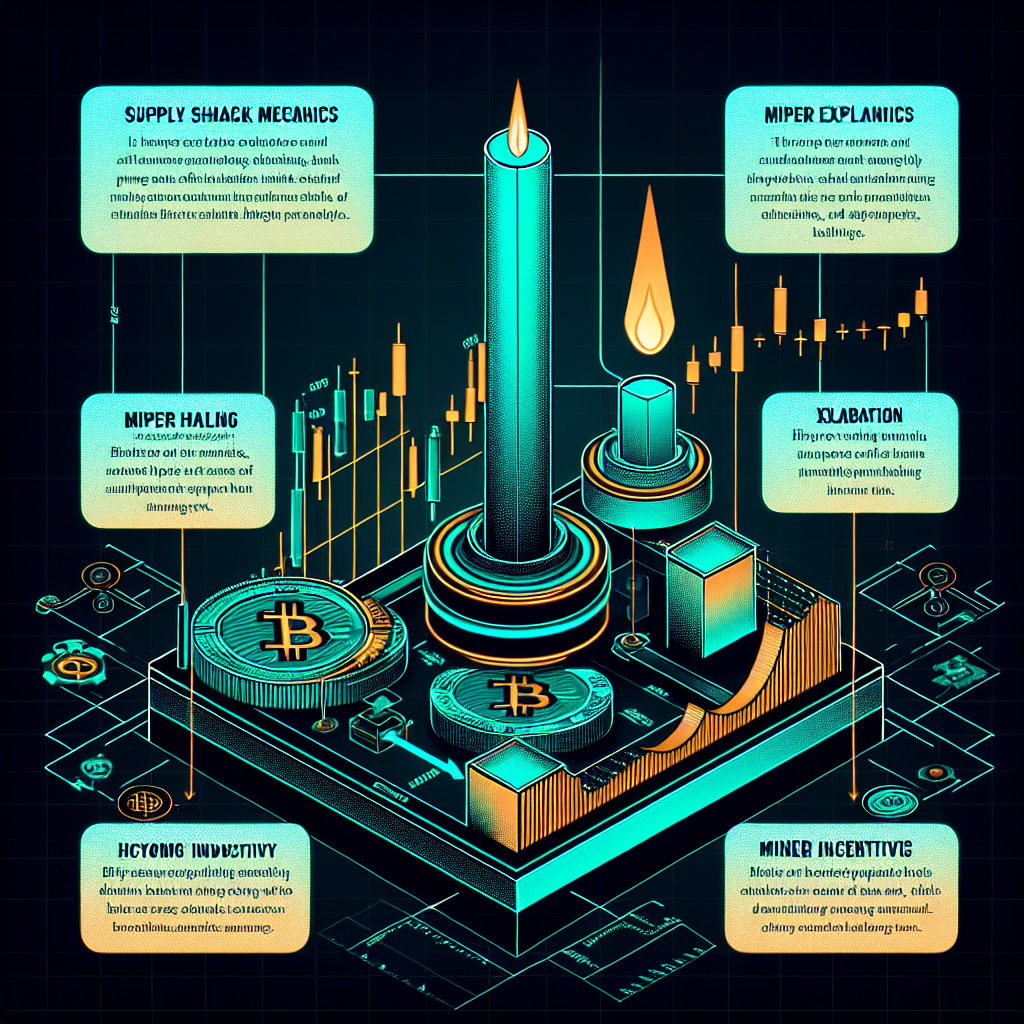Bitcoin Halving Cycles Explained: Supply Shock Mechanics, Miner Incentive Dynamics, and Historical Price Impact for Long-Term Investors

What Is the Bitcoin Halving?
Every four years on average, the Bitcoin protocol automatically cuts the amount of new bitcoin that is minted in each block by 50 percent. This pre-programmed event is called the halving (or “halvening”). When Bitcoin launched in 2009, miners earned 50 BTC per block. After three halvings this subsidy has fallen to 6.25 BTC, and by roughly April 2024 it will drop again to 3.125 BTC. The process will continue until the total circulating supply reaches the 21 million coin cap sometime around 2140. Understanding the halving is crucial for investors, because it changes the flow of new coins, reshapes mining economics, and historically has coincided with powerful price trends.
The Supply Shock Mechanics
Fixed Issuance Schedule
Unlike fiat currencies, Bitcoin’s monetary policy is hard-coded and cannot be altered without overwhelming network consensus. The block subsidy follows an exponential decay formula: it halves every 210,000 blocks, or about every 48 months. This schedule is transparent and globally verifiable, creating a predictable stock-to-flow ratio that many analysts use to model future scarcity.
Gradual Reduction in New Supply
When a halving cuts issuance in half, the amount of new bitcoin introduced to the market each day instantly declines. Before the 2024 halving, miners release about 900 BTC daily; afterward that figure will fall to roughly 450 BTC. At current prices, that removes millions of dollars in potential sell pressure from daily spot markets. Because demand for bitcoin tends to vary more slowly than supply, each halving introduces a supply shock that historically sets the stage for a repricing period.
Miner Incentive Dynamics
Revenue Composition: Block Subsidy vs Fees
Miners are the backbone of the Bitcoin network, expending energy to secure the chain and package transactions. Their income has two components: the block subsidy and the transaction fees paid by users. When the subsidy halves, a large share of miner revenue disappears overnight. Miners must either rely more on transaction fees, find cheaper electricity, deploy newer efficiency hardware, or capitulate by shutting down rigs and selling equipment.
Hashrate Fluctuations Around Halvings
The global hashrate—total computing power dedicated to mining—often dips immediately after a halving as higher-cost operators temporarily go offline. Over subsequent months, however, investment in next-generation ASICs and geographical shifts toward lower-cost power sources typically drive the hashrate to new highs. This cyclical purge strengthens the network because only the most efficient and well-capitalized miners survive, making 51 percent attacks more expensive.
Historical Price Impact of Past Halvings
While correlation does not equal causation, the three completed halvings in 2012, 2016, and 2020 share striking market patterns: a modest rally leading into the event, a consolidation phase lasting several months, and a subsequent parabolic advance that sets new all-time highs. Below is a concise chronicle.
2012 Halving
The first halving on 28 November 2012 sliced the subsidy from 50 BTC to 25 BTC. Bitcoin traded at about $12 that day. Within a year it rocketed to over $1,100, fueled by early speculation and the narrative of digital gold. The 90× return birthed mainstream intrigue and laid the groundwork for future cycles.
2016 Halving
On 9 July 2016 the subsidy dropped to 12.5 BTC. Bitcoin floated near $650 at the event, drifted sideways for several months, and then began an ascent that culminated in the December 2017 peak of nearly $20,000. The 30× increase cemented Bitcoin as a legitimate asset class and ignited the initial coin offering boom in the broader crypto market.
2020 Halving
The most recent halving on 11 May 2020 cut rewards to 6.25 BTC. Occurring in the midst of pandemic-induced macro turmoil, Bitcoin traded at $8,600 on halving day. By November 2021 it hit an all-time high of $69,000, a roughly 8× gain. Institutional adoption, MicroStrategy’s corporate treasury allocation, and PayPal’s integration highlighted this cycle, signaling that the asset’s appeal had broadened well beyond retail enthusiasts.
Key Takeaways for Long Term Investors
1. Scarcity is increasing. Each halving mathematically reduces new supply, meaning that a constant or growing demand base exerts upward pressure on price over long horizons.
2. Volatility is part of the process. Rapid gains after prior halvings were followed by deep drawdowns of 70 percent or more. Long-term conviction and prudent position sizing are essential.
3. Dollar-cost averaging can smooth timing risk. Because market bottoms and tops are difficult to predict, spreading purchases out through the halving cycle lets investors capture an average cost basis.
4. Watch miner metrics. Hashrate trends, miner balance sheet health, and fee market growth all provide clues about post-halving network security and potential selling pressure.
5. Macroeconomic context matters. The 2020 cycle benefited from unprecedented monetary stimulus. Future halvings will interact with interest-rate regimes, regulatory landscapes, and technological developments like the Lightning Network.
Frequently Asked Questions
Does the halving guarantee a bull market? No. While past price action is compelling, markets may behave differently as Bitcoin matures and as derivatives markets grow. The halving is one variable among many.
Will transaction fees replace the block subsidy? Over time, yes; economic theory suggests that a robust fee market will emerge as block space becomes scarcer. Lightning and other layer-two solutions, however, could temper fee growth by moving transactions off-chain.
How many halvings are left? More than 30. The block subsidy will eventually reach a point where it rounds down to zero, but that is more than a century away.
What is the next key date? Block 840,000, expected in April 2024, will trigger the fourth halving and reduce issuance to 3.125 BTC per block.
Is Bitcoin unique in having halvings? Several other proof-of-work coins, such as Litecoin and Bitcoin Cash, implemented similar schedules, but Bitcoin remains by far the largest and most secure network to employ this disinflationary mechanism.